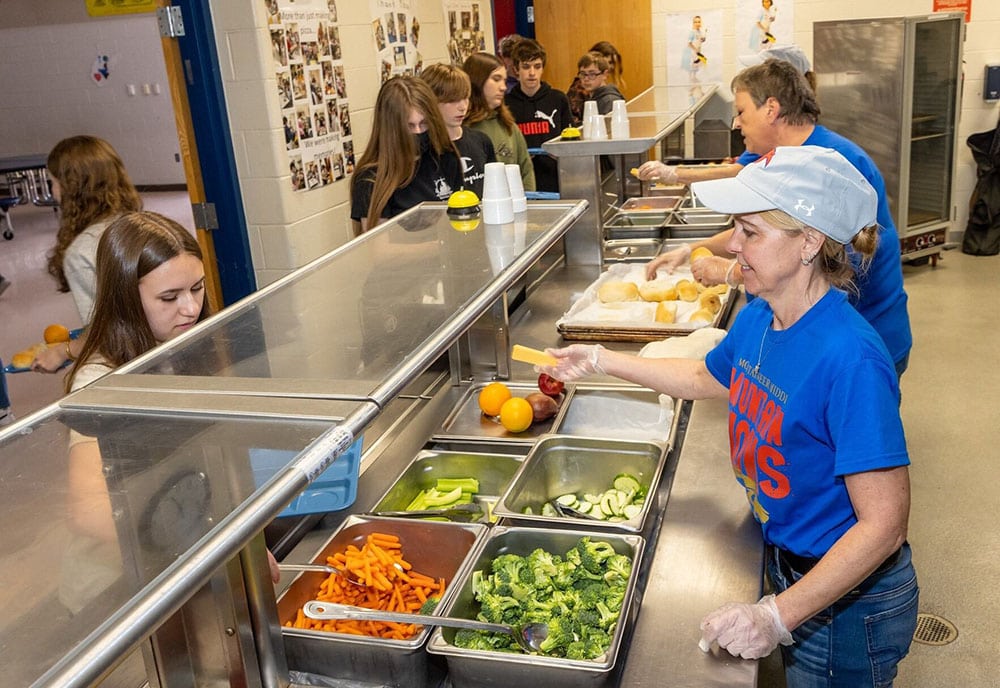
From Lunch Trays to Gourmet Buffets: The Story of American School Lunches
Lunch in school has never just been about food. It’s about policy, culture, convenience, and changing tastes. From metal trays in the 1950s to self-serve burrito bars and organic smoothie stations in today’s universities, the evolution of American school lunches tells a fascinating story about what kids (and young adults) eat — and why.
The Beginnings: 1940s–1950s – Lunch for National Security
The roots of the modern American school lunch system began in the 1940s, with the passage of the National School Lunch Act in 1946. This was a federal effort to ensure American children were well-fed, not just for their health, but also for national preparedness. Leaders believed that poor nutrition during childhood could weaken the population — and even the military — over time.
In the 1950s, school lunches were basic but balanced. A typical lunch tray might have included:
- A scoop of mashed potatoes
- A slice of meatloaf or Salisbury steak
- A buttered dinner roll
- A serving of canned green beans
- Milk in a glass bottle
Lunches were made in large batches and served on metal or plastic trays. Meals were usually hot, hearty, and built to fill bellies — but they didn’t offer much variety.
The Processed Era: 1970s–1980s – Convenience over Quality
As the U.S. moved into the 1970s and 1980s, big changes came. Schools began cutting costs and relying more on processed, frozen, and pre-packaged foods. Microwaves replaced ovens, and heating trays became standard.
The rise of pizza Fridays, french fries, burgers, and chocolate milk became part of the cultural memory of American school lunch. While kids loved the taste, concerns about nutritional value started to emerge. Many schools also introduced à la carte lines, allowing students to skip the main meal and choose snacks instead — often chips, soda, and desserts.
Still, for many students in low-income areas, school lunch was their most reliable (and sometimes only) full meal of the day.
The Health Push: 1990s–2010s – Nutrition Fights Back
The 1990s and 2000s saw rising concerns about childhood obesity, and many started to blame poor school food. Documentaries like Super Size Me and public figures like Michelle Obama brought attention to the issue. In 2010, the Healthy, Hunger-Free Kids Act was passed, requiring schools to serve more whole grains, fruits, vegetables, and low-fat dairy. Portion sizes were reduced. Deep fryers were banned in many school kitchens.
Not everyone welcomed the changes. Students and schools complained about taste, waste, and cost. But the act marked a clear shift: school lunch was no longer just about feeding kids — it was about teaching healthy eating habits.
Today’s Lunchrooms: More Choice, More Awareness
In today’s K–12 schools, food quality varies widely depending on the district’s budget, local policies, and student population. Some urban and wealthier districts offer farm-to-school programs, vegan options, and even ethnic food menus. Others still rely heavily on frozen pizza and reheated pasta.
Technology has changed the game, too. Students often pre-order lunch via apps, and many schools now track nutritional data on menus to meet state and federal standards.
Welcome to College: University Dining in 2020s
Stepping onto a college campus, the lunch experience transforms. Students now have access to gourmet-level food courts, international cuisine, and 24-hour dining halls — especially at large or well-funded universities.
At schools like UCLA, University of Massachusetts Amherst, and Virginia Tech, dining services are no longer just cafeterias — they’re culinary experiences. Chefs create seasonal menus, students vote on favorite dishes, and everything from sushi to vegan tikka masala might be on the menu.
Let’s take a tour through a few campuses:
University of Massachusetts Amherst (UMass)
UMass is consistently ranked #1 in campus food by The Princeton Review. Their dining program emphasizes sustainability, locally sourced ingredients, and variety. Students enjoy gourmet-level stations like made-to-order stir fry, hand-rolled sushi, wood-fired pizza, and bakery-fresh desserts.
UCLA (University of California, Los Angeles)
At UCLA, dining halls are themed: Bruin Plate focuses on healthy, fresh foods; De Neve serves comfort classics; and Feast is all about Asian cuisine. With dozens of choices daily — including gluten-free and halal options — students rarely get bored.
Virginia Tech
Another top contender, Virginia Tech has massive dining centers that look more like food halls than cafeterias. They serve rotisserie meats, barbecue, pasta bars, salads, and global cuisine — and they even have a full-scale bakery on site.
University of North Texas
Known for being home to Mean Greens, the first 100% vegan dining hall in the country. Students there enjoy plant-based takes on burgers, stir-fries, and desserts, proving that healthy eating and flavor can go hand in hand.
